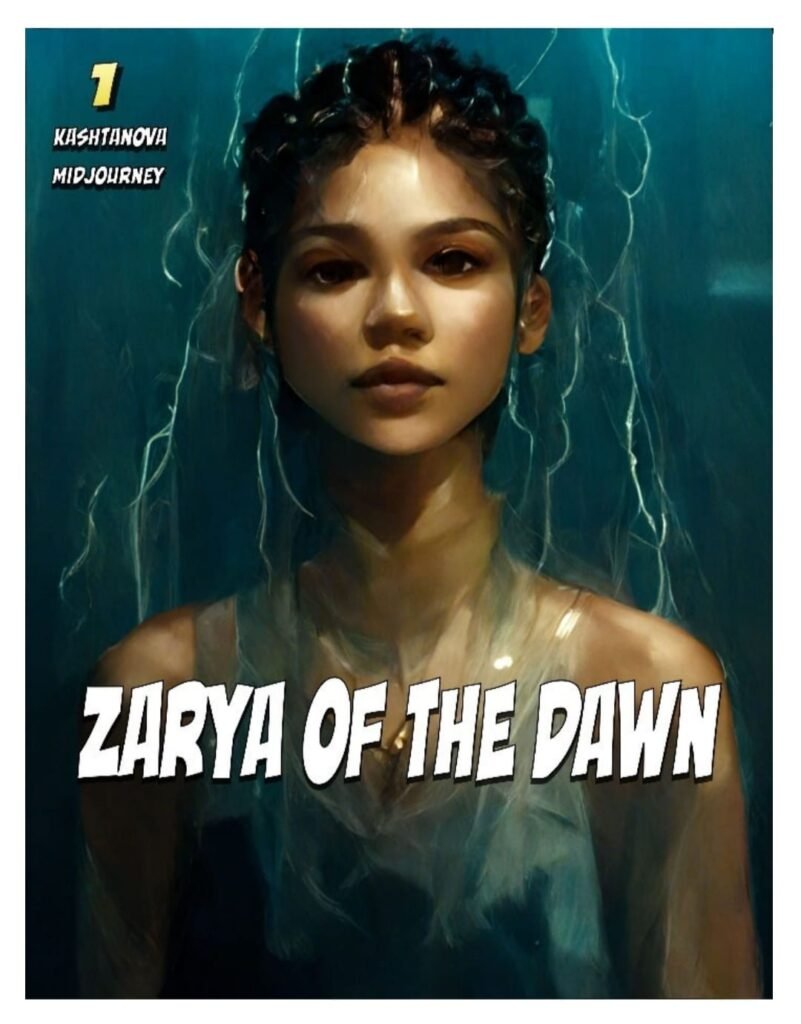In an era where the judicial systems around world are still trying to figure out how to navigate their way through the evolving laws around Artificial Intelligence (AI), the United States Copyright Office (USCO) passed a significant decision with regard to grant of copyright registration for a graphic novel/comic book entitled “Zarya Of The Dawn”. While cancelling the original certificate of registration, USCO issued a fresh certificate covering only the material created by the author Kris Kashtanova, excluding the images in the novel created by AI.
Case Background
On September 15, 2022, Ms. Kashtanova submitted an application of the Work and copies of each page of the Work as the deposit copy. In her application, Ms. Kashtanova listed the author of the work as Kristina Kashtanova and stated that she had created a comic book. It is important to note that this application did not disclose that it used AI to create any part of the Work, nor did she disclaim any portion of the Work. The USCO reviewed the application on the same day and registered the Work.
Shortly after registering the Work, the USCO became aware through Ms. Kashtanova’s statements on social media that she had created the comic book using Midjourney’s AI software. Since the application failed to disclose the use of AI, it was determined that it was incorrect, or at a minimum, substantively incomplete. Ms. Kashtanova was notified in a letter dated October 28, 2022 that unless she provided additional information in writing, the said registration would be cancelled.
The USCO received a response from Ms Kashtanova’s attorney on November 21, 2022. It was argued in the letter that the Work’s registration should not be cancelled because:
- Ms. Kashtanova authored every aspect of the Work, with Midjourney serving merely as an assistive tool.
- Alternatively, portions of the Work are registrable because the text was authored by Ms. Kashtanova and the Work is a copyrightable compilation due to her creative selection, co-ordination, and arrangement of the text and images.
Legal Principles
USCO examined the legal principles that would guide their analysis of the author’s Work. The Copyright Act defines the scope of copyright protection. Under the Act, a work may be registered if it qualifies as an “original work of authorship fixed in any tangible medium of expression.”
The Supreme Court has explained that the term “original” in this context consists of two components: independent creation and sufficient creativity. First, the work must have been independently created by the author. Second, the work must possess sufficient creativity. Only a modicum of creativity is necessary, but the Supreme Court has ruled that some works—such as the alphabetized telephone directory at issue in Feist—fail to meet even this low threshold.
The Supreme Court observed that “[a]s a constitutional matter, copyright protects only those constituent elements of a work that possess more than a de minimis quantum of creativity.” It found that there can be no copyright in a work in which “the creative spark is utterly lacking or so trivial as to be virtually nonexistent.” quantum of creativity.”. It found that there can be no copyright in a work in which “the creative spark is utterly lacking or so trivial as to be virtually non-existent.”
Application of Copyright Law to Midjourney Images
Based on the record before it, the USCO concluded that the images generated by Midjourney contained within the Work are not original works of authorship protected by copyright.
The USCO observed –
“Though she claims to have “guided” the structure and content of each image, the process described in the Kashtanova Letter makes clear that it was Midjourney—not Kashtanova—that originated the “traditional elements of authorship” in the images.
Ms. Kashtanova claims that each image was created using “a similar creative process.” Summarized here, this process consisted of a series of steps employing Midjourney. First, she entered a text prompt to Midjourney, which she describes as “the core creative input” for the image. Next, “Kashtanova then picked one or more of these output images to further develop.” She then “tweaked or changed the prompt as well as the other inputs provided to Midjourney” to generate new intermediate images, and ultimately the final image. Ms. Kashtanova does not claim she created any visual material herself—she uses passive voice in describing the final image as “created, developed, refined, and relocated” and as containing elements from intermediate images “brought together into a cohesive whole.” To obtain the final image, she describes a process of trial-and-error, in which she provided “hundreds or thousands of descriptive prompts” to Midjourney until the “hundreds of iterations [created] as perfect a rendition of her vision as possible.”
Conclusion
Finally, the USCO noted-
“For the reasons explained above, the Office concludes that the registration certificate for Zarya of the Dawn, was issued based on inaccurate and incomplete information. Had the Office known the information now provided by Ms. Kashtanova, it would have narrowed the claim to exclude material generated by artificial intelligence technology. In light of the new information, the Office will cancel the previous registration pursuant to 37 C.F.R, § 201.7(c)(4) and replace it with a new registration covering the original authorship that Ms. Kashtanova contributed to this work, namely, the “text” and the “selection, coordination, and arrangement of text created by the author and artwork generated by artificial intelligence.”
Because these contributions predominantly contain textual material, they will be reregistered as an unpublished literary work. The new registration will explicitly exclude “artwork generated by artificial intelligence.”
To Read USCO Order Click Here
Author- Nitish Kashyap

